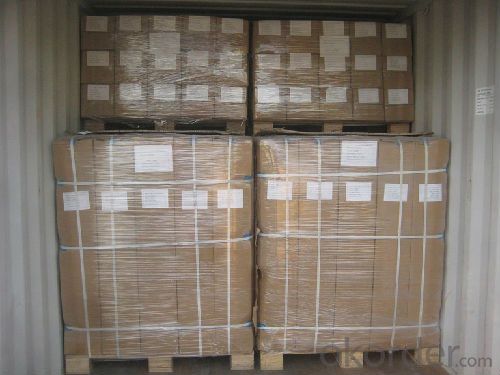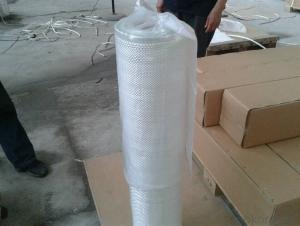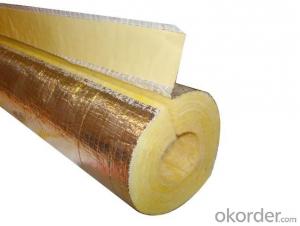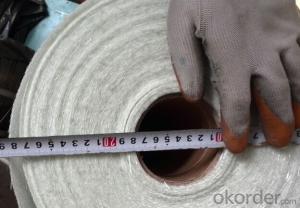E Glass Woven Roving
- Loading Port:
- Shanghai
- Payment Terms:
- TT or LC
- Min Order Qty:
- 16000 kg
- Supply Capability:
- 160000 kg/month
OKorder Service Pledge
OKorder Financial Service
You Might Also Like
Brief Introduction
E-Glass Woven Rovings are compatible with unsaturated polyester, vinyl ester, epoxy and phenolic resins.
E-Glass Woven Rovings are a high-performance reinforcement widely used in hand lay up and robot processes to manufacture boats, vessels, plane and automotive parts, furniture and sports facilities.
Characteristics
Warp and weft rovings aligned in a parallel and flat manner, resulting in uniform tension
Densely aligned fibers, resulting in high dimensional stability and making handling easy
Product Specifications
Property | Area Weight | Moisture Content | Size Content | Width |
(%) | (%) | (%) | (mm) | |
Test Method | IS03374 | ISO3344 | ISO1887 | |
EWR200 | ±7.5 | ≤0.15 | 0.4-0.8 | 20-3000 |
EWR270 | ||||
EWR300 | ||||
EWR360 | ||||
EWR400 | ||||
EWR500 | ||||
EWR600 | ||||
EWR800 |
Special specification can be produce according to customer requirements.
FAQ
Packaging:Each woven roving is wound onto a paper tube which has an inside diameter of 76mm and the mat roll has a diameter of 220mm. The woven roving roll is wrapped up with plastic film,and then packed in a cardboard box or wrapped up with kraft paper. The rolls can be horizontally placed. For transportation, the rolls can be loaded into a cantainer directly or on pallets.
Storage:Unless otherwise specified,It should be stored in a dry, cool and rain-proof area. It is recommended that the room temperature and humidity should be always maintained at 15℃~35℃ and 35%~65% respectively.
- Q:Can fiberglass mat tissue be used for automotive parts?
- Yes, fiberglass mat tissue can be used for automotive parts. Fiberglass mat tissue is a versatile material that provides strength, rigidity, and durability. It is commonly used in the automotive industry for various applications such as reinforcing panels, bumpers, hoods, and body parts. The fiberglass mat tissue is lightweight, making it suitable for reducing the overall weight of the vehicle and improving fuel efficiency. Additionally, it is resistant to corrosion, chemicals, and extreme temperature conditions, making it a reliable choice for automotive parts. The material's flexibility also allows for easy molding and shaping, enabling manufacturers to create complex designs and achieve desired aesthetics. Overall, fiberglass mat tissue is an excellent option for automotive parts due to its strength, durability, lightweight nature, and versatility.
- Q:Can fiberglass mat tissue be used for making lightweight countertops?
- Yes, fiberglass mat tissue can be used for making lightweight countertops.
- Q:How is fiberglass mat tissue different from fiberglass cloth?
- Fiberglass mat tissue and fiberglass cloth, despite being woven glass fiber materials, exhibit distinct dissimilarities. Fiberglass mat tissue, an unwoven substance, comprises glass fibers randomly arranged and held together by a binding agent. It predominantly serves as a reinforcement layer in composite materials like fiberglass reinforced plastic (FRP) and fiberglass reinforced concrete (FRC). The random fiber orientation enhances the composite structure's robustness and stability. Notably, fiberglass mat tissue finds widespread usage in applications necessitating strength and rigidity, such as boat hulls or automotive components. In contrast, fiberglass cloth, a woven material, is created by interlacing glass fibers in a specific pattern. It is commonly employed in situations where flexibility and conformability are essential, such as the construction of surfboards or within the aerospace industry. By allowing precise and controlled fiber placement, fiberglass cloth facilitates the production of intricate shapes and attains a superior level of detail in the final product. Ultimately, the primary disparity between fiberglass mat tissue and fiberglass cloth lies in their structural characteristics and intended applications. While fiberglass mat tissue offers strength and stability, fiberglass cloth provides flexibility and conformability. The selection between these materials hinges on the project's specific requirements and the desired outcome.
- Q:What is the flexural strength of fiberglass mat tissue?
- The flexural strength of fiberglass mat tissue refers to its ability to resist bending or flexing without breaking. It is typically high due to the reinforcing properties of the fiberglass material, making it suitable for applications requiring structural integrity and resistance to deformation.
- Q:How does the thickness of fiberglass mat tissue affect its flexibility?
- The thickness of fiberglass mat tissue directly affects its flexibility. Generally, thinner fiberglass mat tissue is more flexible compared to thicker ones. This is because the thickness of the mat tissue determines the amount of resin that can be absorbed and the overall weight of the material. Thinner mat tissue allows for more resin saturation, which increases its flexibility. Additionally, thinner mat tissue is lighter in weight, making it easier to bend and shape. On the other hand, thicker mat tissue is less flexible due to its lower resin absorption capacity and heavier weight. It may require more force or effort to bend or shape thicker mat tissue compared to thinner ones. Therefore, the thickness of fiberglass mat tissue plays a crucial role in determining its flexibility.
- Q:What is the maximum temperature that fiberglass mat tissue can withstand?
- The specific type of fiberglass material being utilized determines the maximum temperature that fiberglass mat tissue can endure. Typically, fiberglass mat tissues are engineered to withstand temperatures of up to 600 degrees Fahrenheit (315 degrees Celsius). Nevertheless, it should be emphasized that the temperature resistance may fluctuate due to various factors, including material thickness, manufacturing techniques, and the intended usage. For precise information regarding the maximum temperature tolerance of a specific fiberglass mat tissue, it is advised to refer to the manufacturer's specifications or technical data sheets.
- Q:What are the different manufacturing processes for fiberglass mat tissue?
- There are several different manufacturing processes for fiberglass mat tissue, each of which is designed to produce a specific type of mat with unique properties. One common manufacturing process is the wet-laid process. In this method, glass fibers are first chopped into small pieces and then dispersed in a water-based slurry. The slurry is then spread onto a moving screen or belt, allowing the water to drain away and leaving behind a mat of randomly oriented fibers. The mat is then dried and further processed to achieve the desired thickness and density. Another manufacturing process is the dry-laid process. In this method, glass fibers are first formed into a loose, fluffy mat using air or mechanical means. The loose fibers are then bonded together using a binder material, such as a resin or latex, which is sprayed onto the fibers. The binder cures, creating a cohesive mat with controlled thickness and density. A third manufacturing process is the stitch-bonded process. This method involves mechanically stitching individual glass fibers together using a series of needles. The needles pierce the fibers and interlock them, creating a bonded fabric. This process allows for the production of mats with high strength and dimensional stability. Finally, there is the spunbond process. This process involves extruding molten glass through fine spinnerets to form continuous filaments. The filaments are then collected onto a moving belt or screen, where they are bonded together using heat or a binder. This process produces mats with uniform fiber distribution and high strength. Overall, the choice of manufacturing process for fiberglass mat tissue depends on the desired properties of the final product, such as strength, thickness, density, and dimensional stability. Each process has its own advantages and disadvantages, and manufacturers will select the most suitable process based on their specific requirements.
- Q:How thick is fiberglass mat tissue typically?
- Fiberglass mat tissue typically has a thickness ranging from 0.3 to 0.6 millimeters.
- Q:Can fiberglass mat tissue be used for reinforcing wind turbine blades?
- Yes, fiberglass mat tissue can be used for reinforcing wind turbine blades. It is commonly utilized in the manufacturing process as it provides strength, durability, and flexibility to the blades, making them more capable of withstanding the forces and stresses experienced during operation.
- Q:How is fiberglass mat tissue used in the aerospace industry?
- Fiberglass mat tissue is extensively used in the aerospace industry due to its exceptional properties and versatility. It serves various purposes and plays a crucial role in the manufacturing and maintenance of aircraft. One of the primary applications of fiberglass mat tissue in the aerospace industry is its use in composite materials. Composite materials, which are made by combining two or more materials, are widely used in aircraft construction to reduce weight while maintaining structural integrity. Fiberglass mat tissue is often used as a reinforcement material in composite laminates. It provides strength, stiffness, and dimensional stability to the structure, making it suitable for various components such as wings, fuselage, and tail sections. The high tensile strength of fiberglass mat tissue ensures the composite structure can withstand the demanding conditions faced in the aerospace industry. Furthermore, fiberglass mat tissue is also utilized in the repair and maintenance of aircraft. It is commonly used in the process of composite patching, which involves repairing damaged or worn-out composite components. The fiberglass mat tissue is impregnated with resin and applied to the damaged area, providing strength and restoring structural integrity. This technique is widely employed for repairing aircraft components such as fairings, radomes, and other composite parts, ensuring their safe and reliable operation. Moreover, fiberglass mat tissue finds application in the insulation of aircraft. It is used as a thermal and acoustic insulation material in the interior cabin and other critical areas of the aircraft. Fiberglass mat tissue helps in reducing heat transfer, preventing condensation, and maintaining a comfortable cabin environment for passengers and crew. Additionally, its sound-absorbing properties help minimize noise levels inside the aircraft, enhancing the overall travel experience. In conclusion, fiberglass mat tissue is an indispensable material in the aerospace industry. It is used in the production of composite structures, repair and maintenance of aircraft, and as an insulation material. Its exceptional properties, including high tensile strength, dimensional stability, and thermal/acoustic insulation capabilities, make it an ideal choice for various applications in the aerospace industry.
1. Manufacturer Overview |
|
|---|---|
| Location | |
| Year Established | |
| Annual Output Value | |
| Main Markets | |
| Company Certifications | |
2. Manufacturer Certificates |
|
|---|---|
| a) Certification Name | |
| Range | |
| Reference | |
| Validity Period | |
3. Manufacturer Capability |
|
|---|---|
| a)Trade Capacity | |
| Nearest Port | |
| Export Percentage | |
| No.of Employees in Trade Department | |
| Language Spoken: | |
| b)Factory Information | |
| Factory Size: | |
| No. of Production Lines | |
| Contract Manufacturing | |
| Product Price Range | |
Send your message to us
E Glass Woven Roving
- Loading Port:
- Shanghai
- Payment Terms:
- TT or LC
- Min Order Qty:
- 16000 kg
- Supply Capability:
- 160000 kg/month
OKorder Service Pledge
OKorder Financial Service
Similar products
New products
Hot products
Hot Searches
Related keywords



























